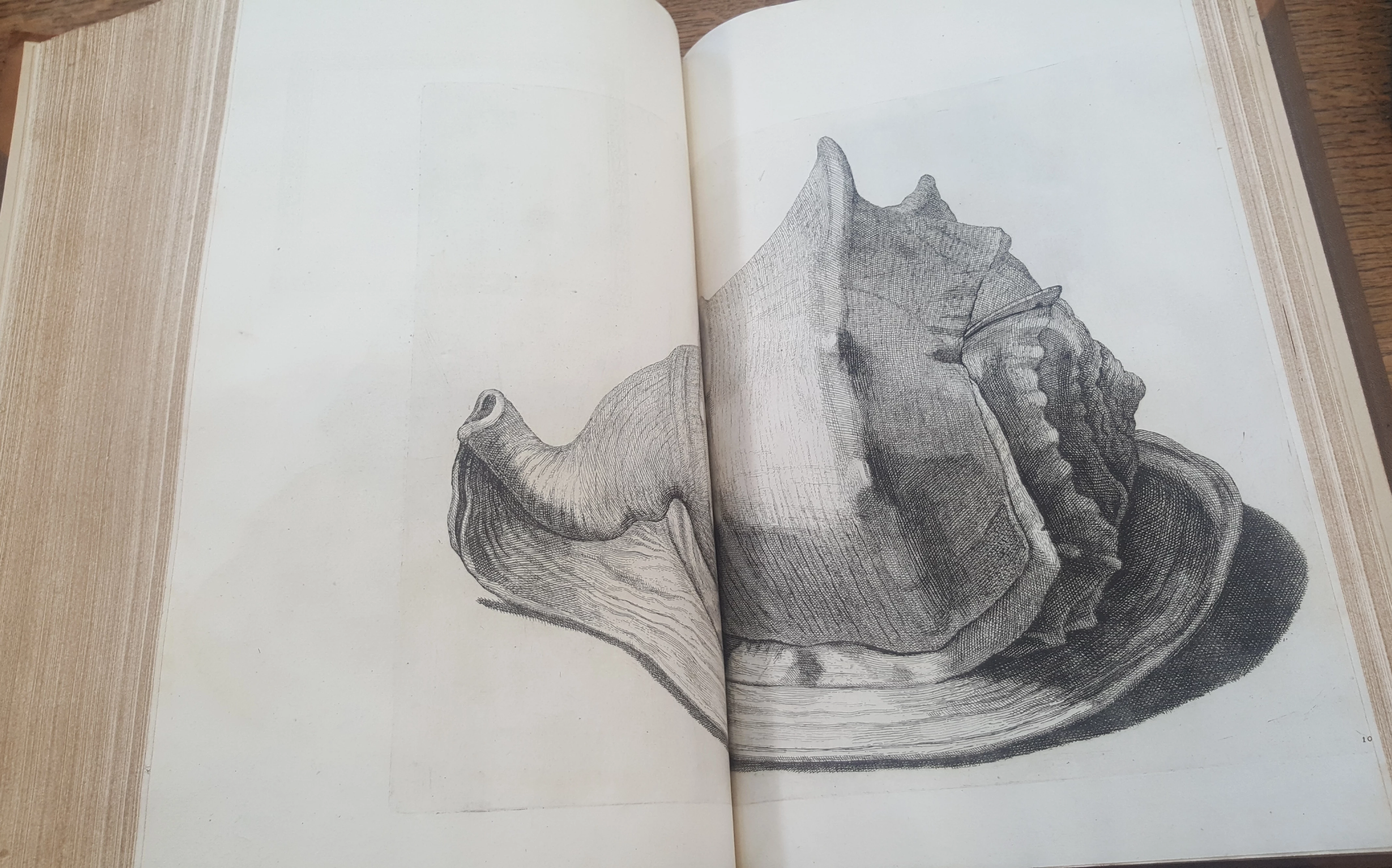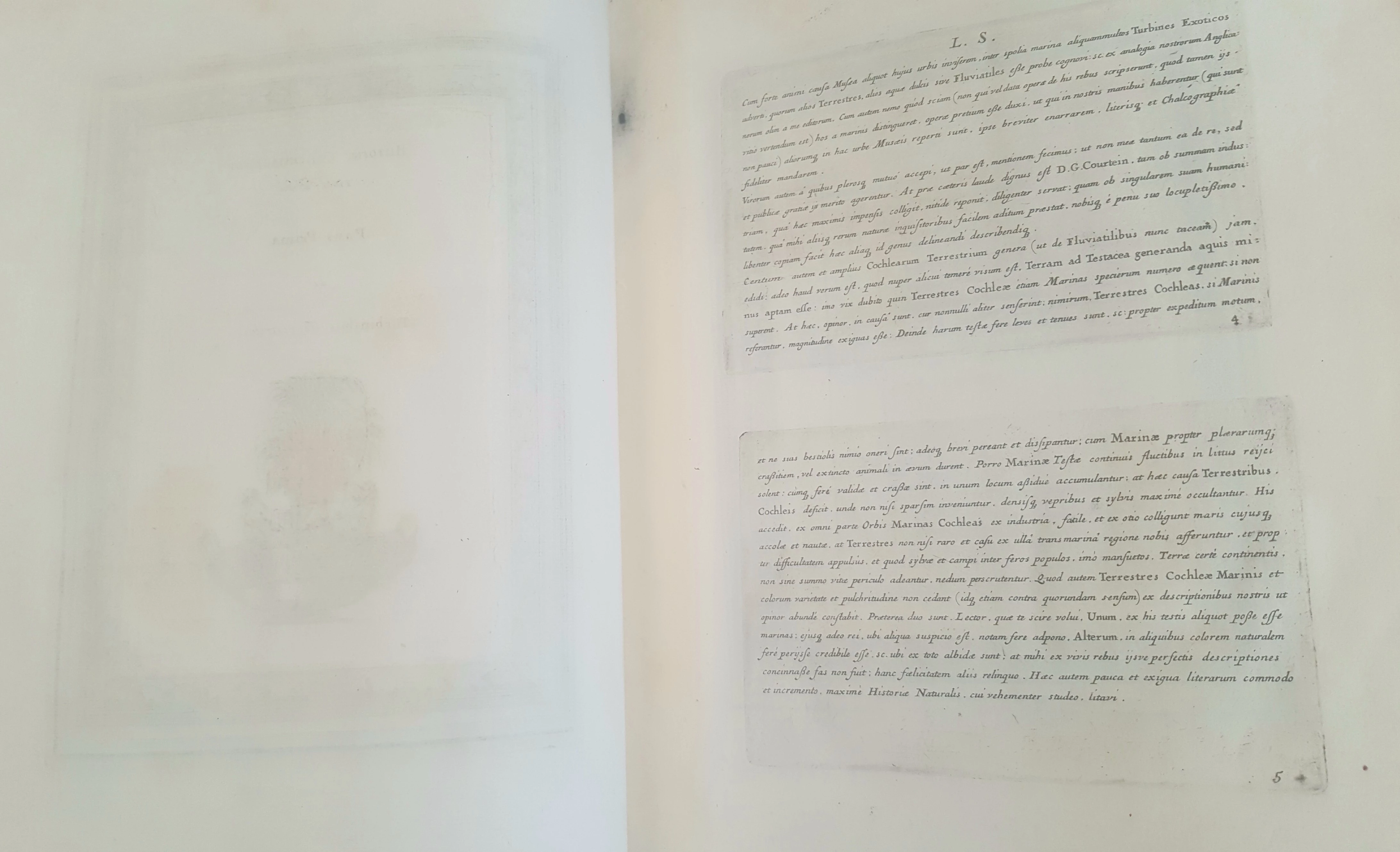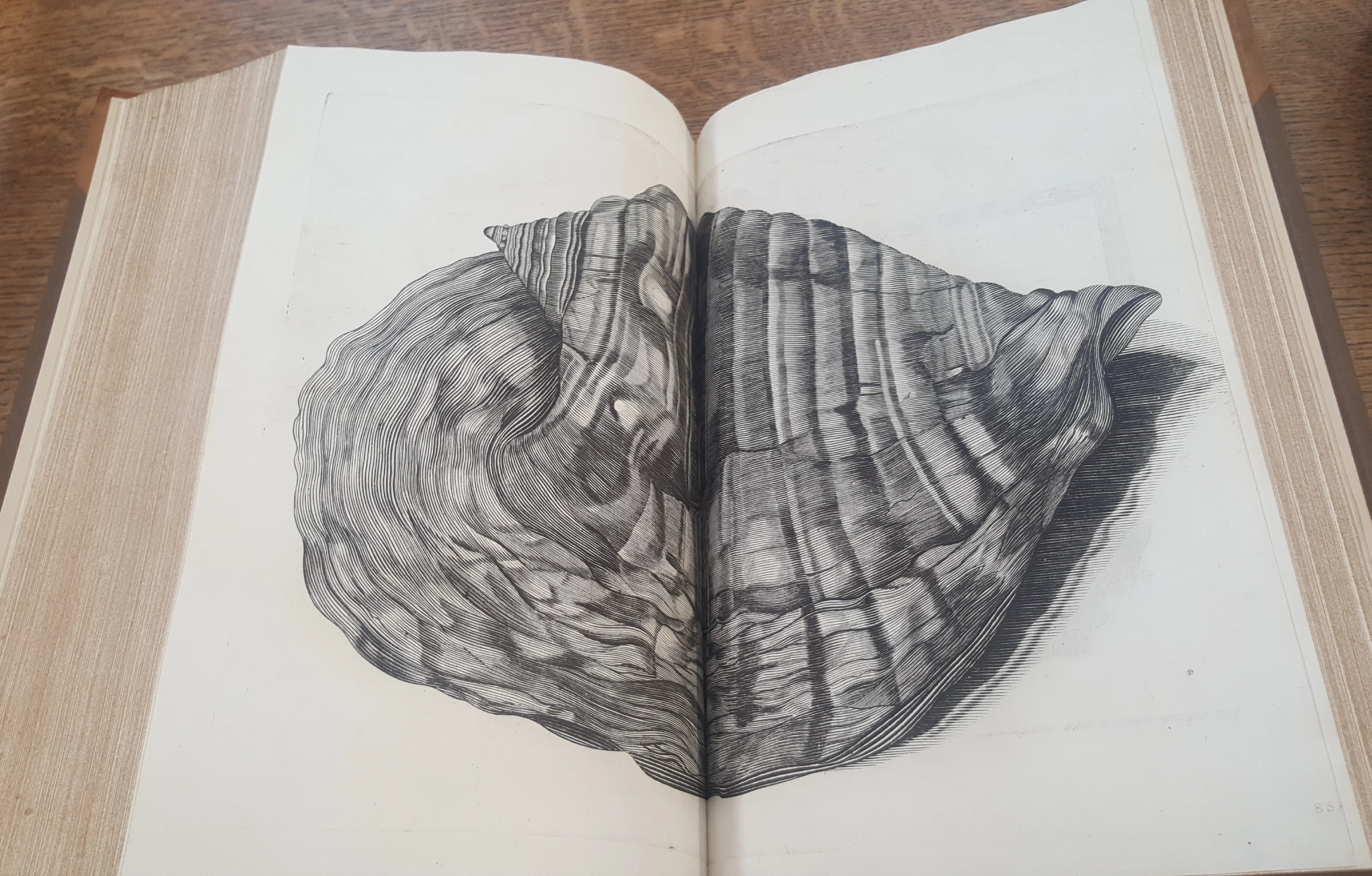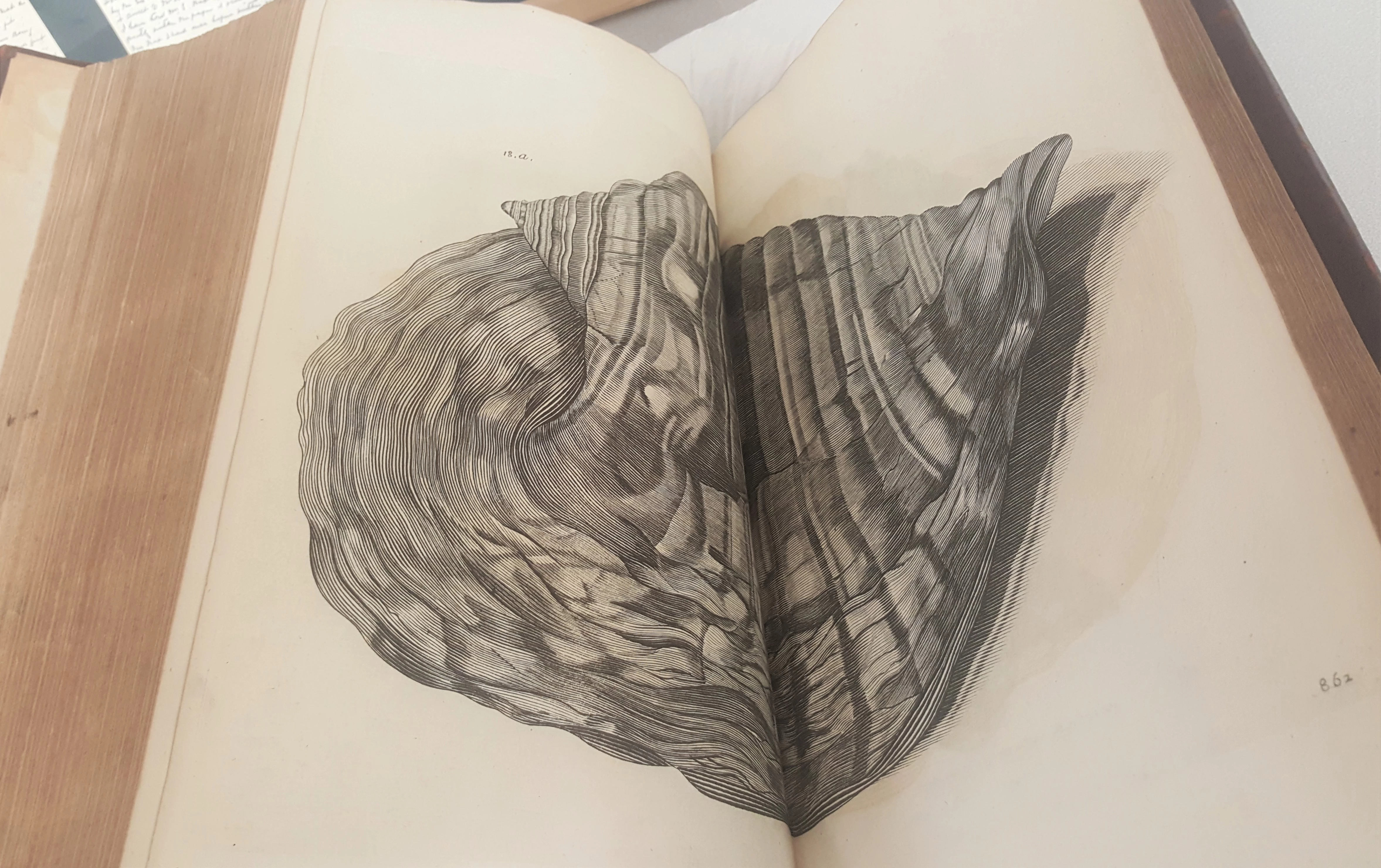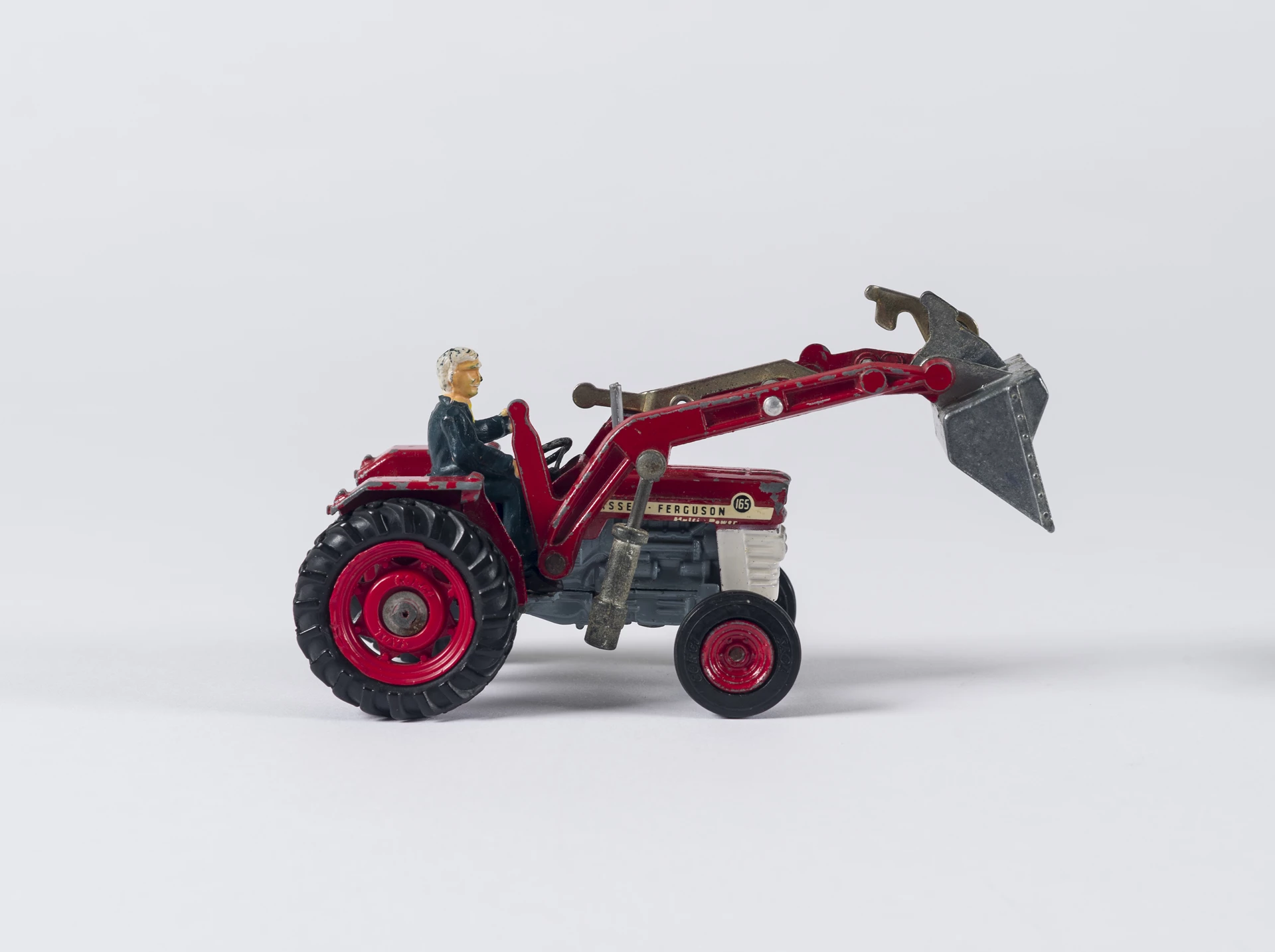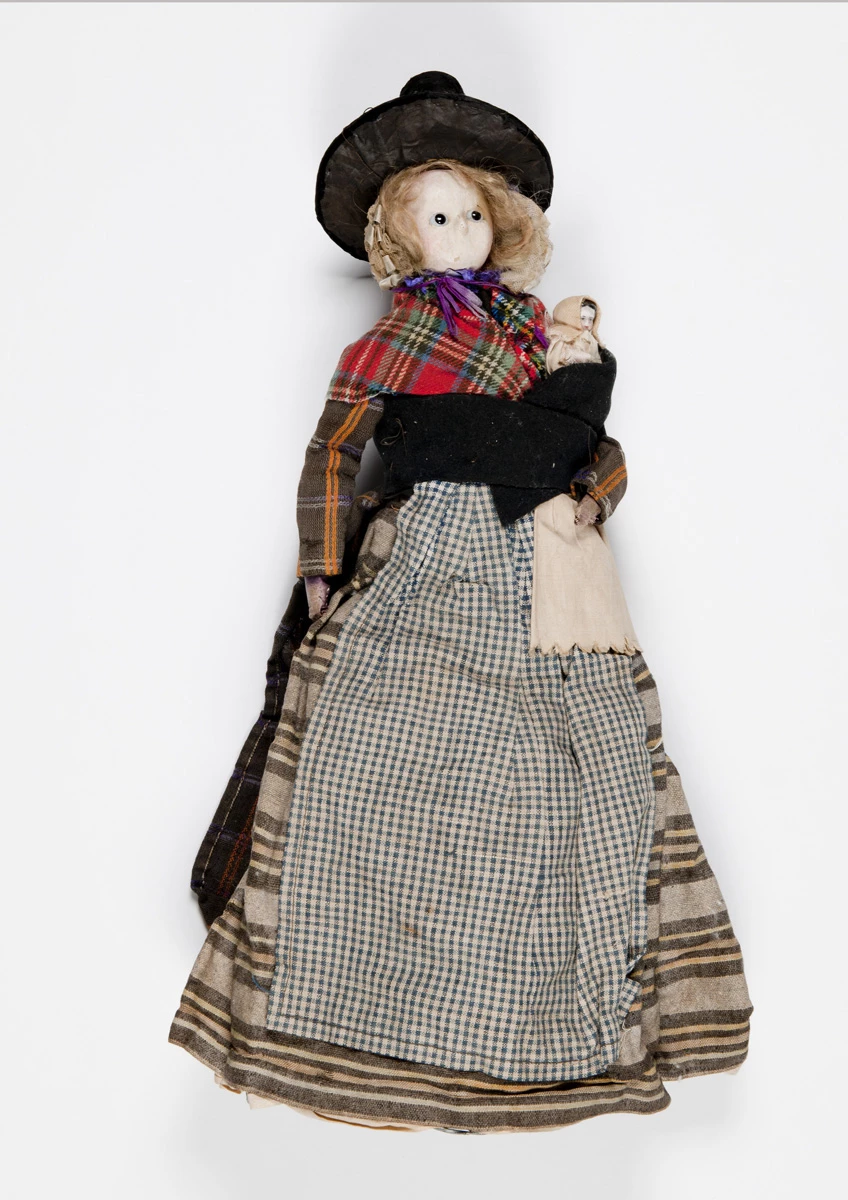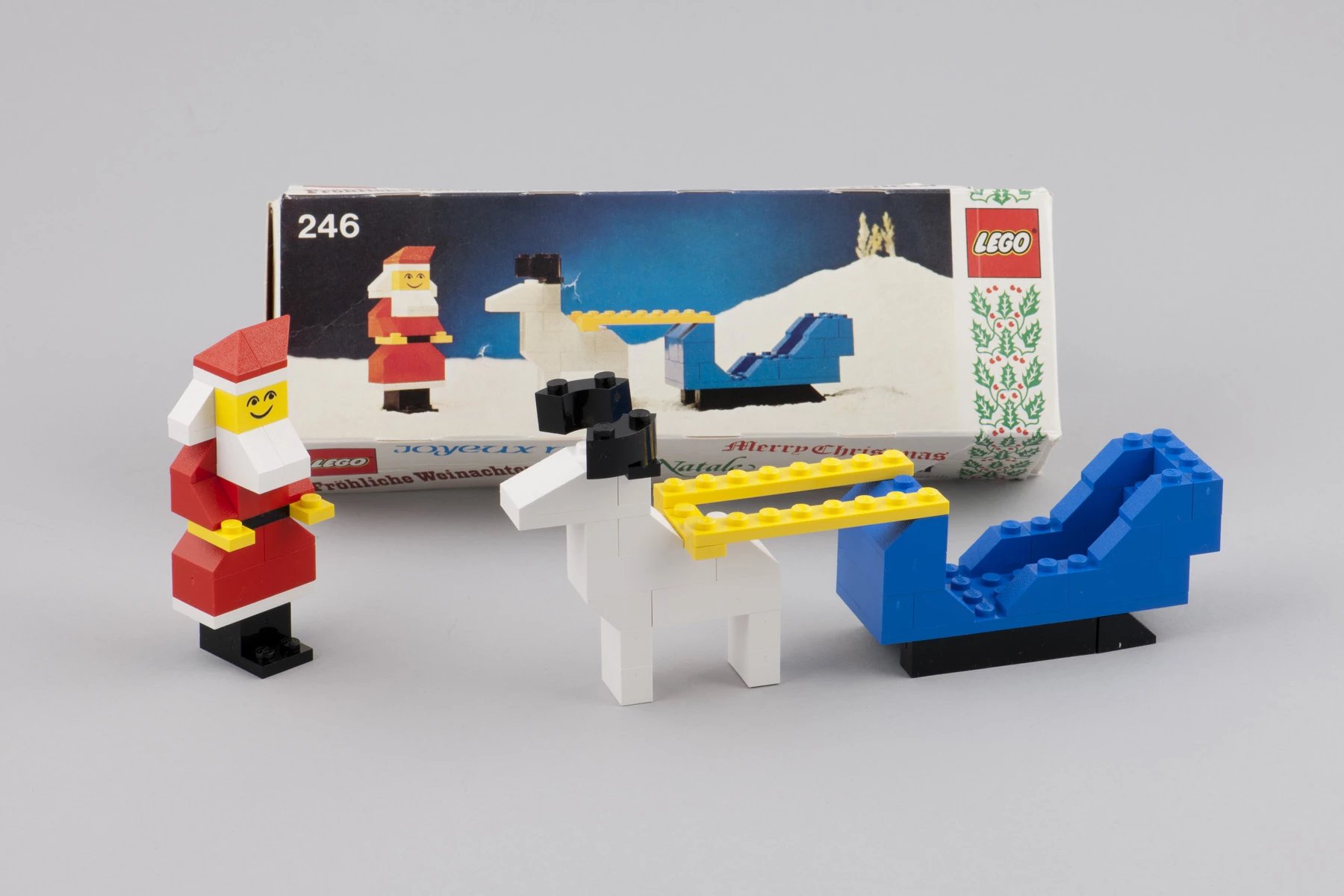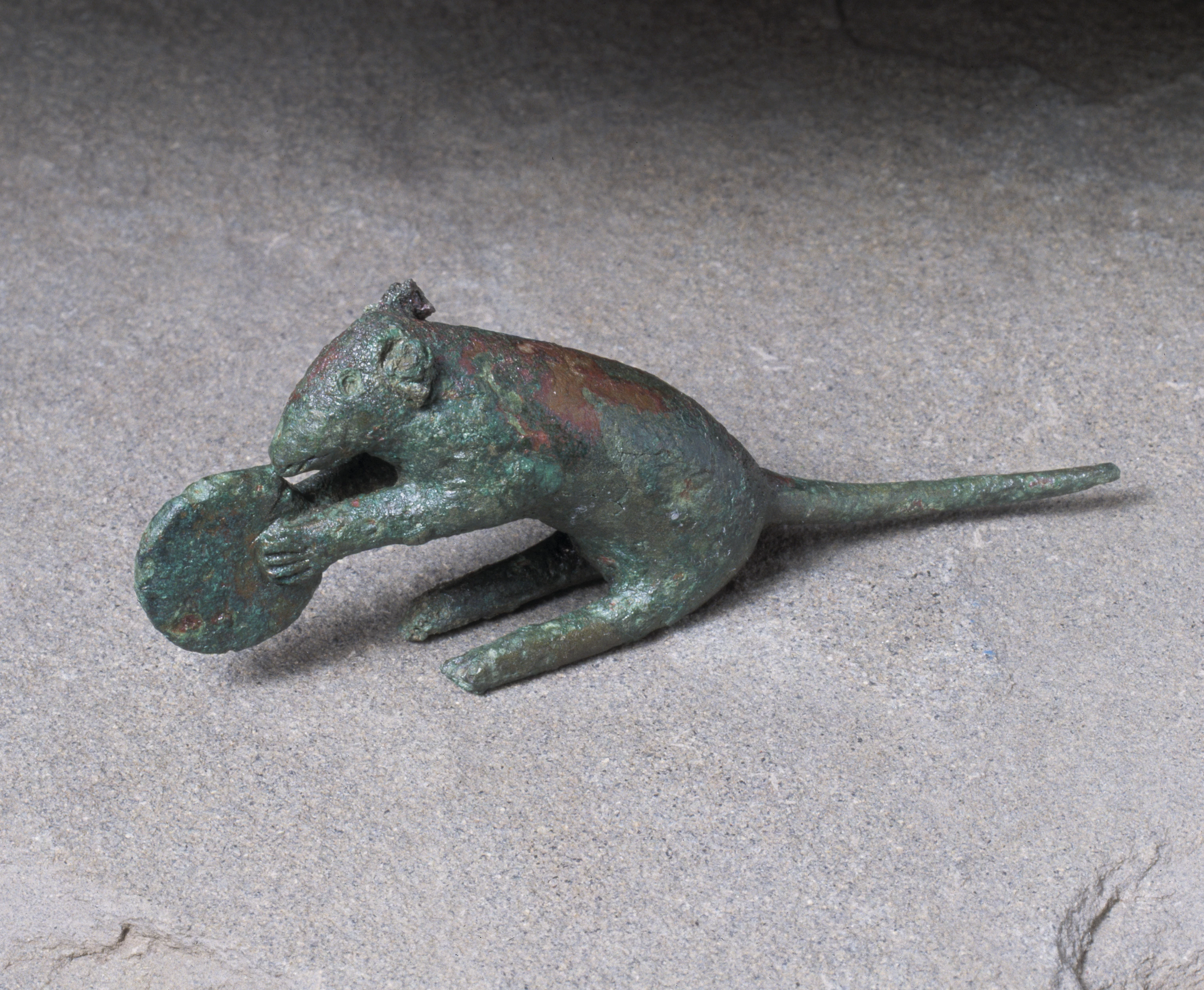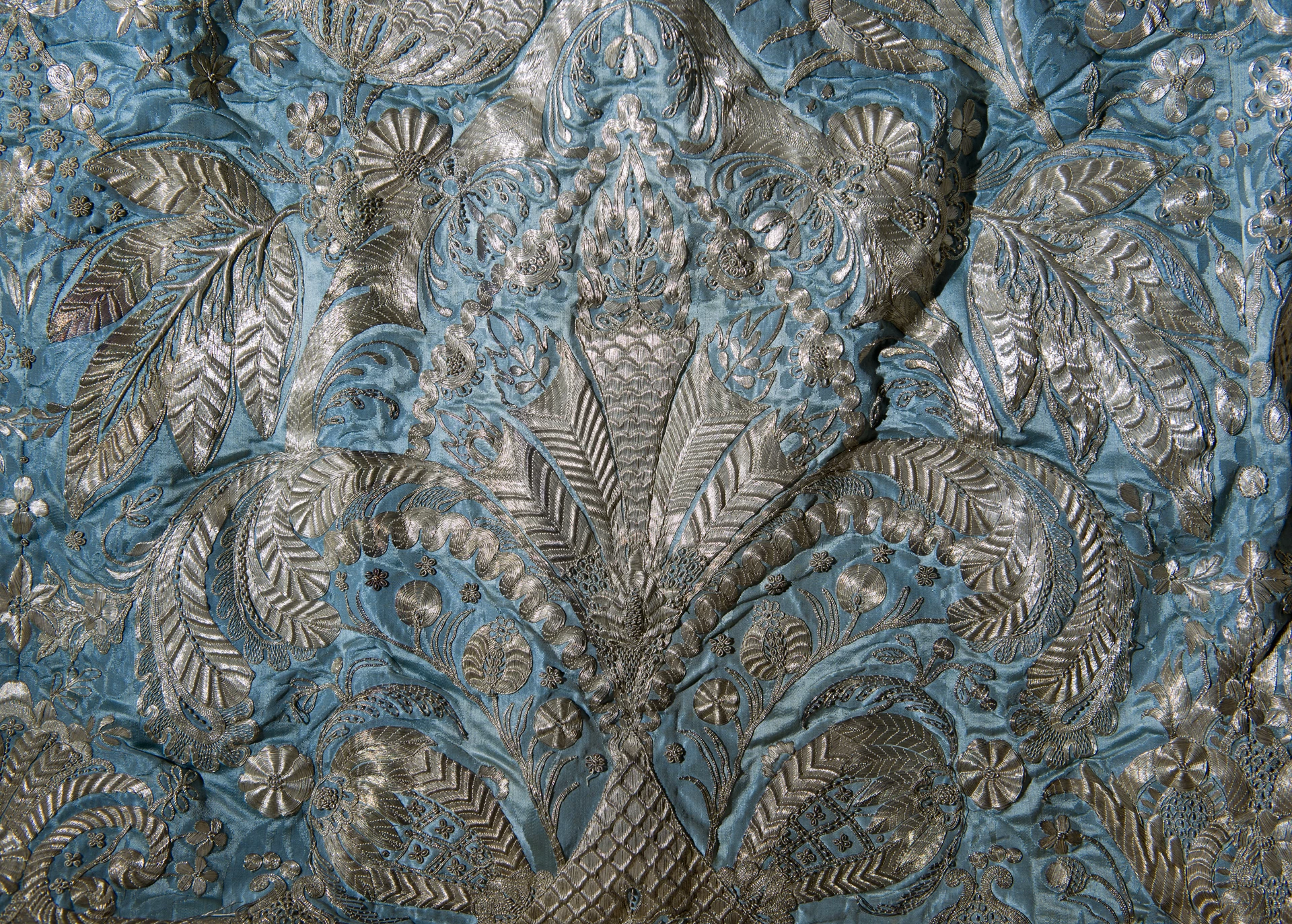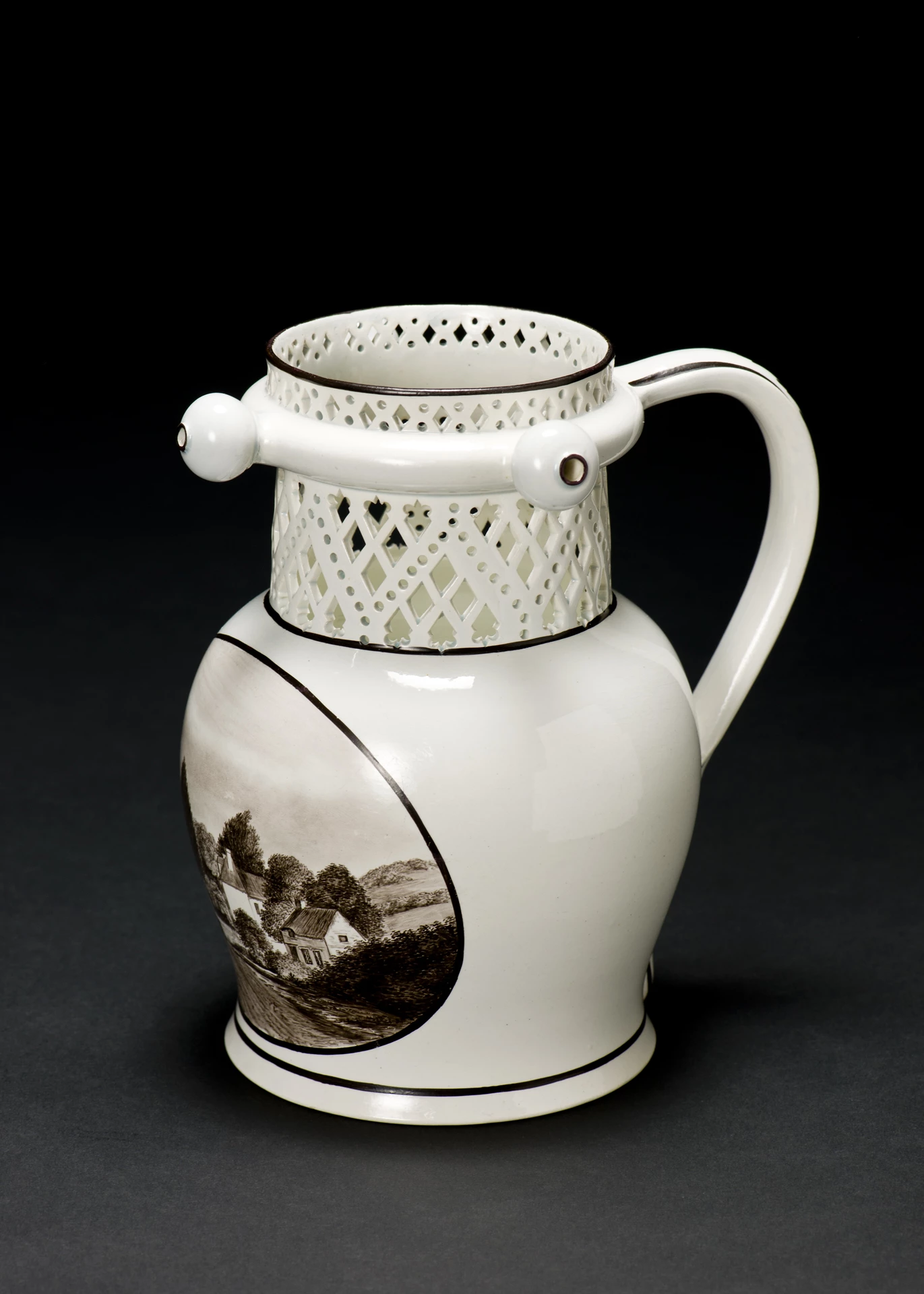The Museum holds a very significant library collection of Molluscan books, known collectively as the Tomlin Library. They were donated to the Museum in 1955 by John Read le Brockton Tomlin (1864-1954), a founder member of the Malacological Society of London, along with his extensive shell collection and archives.
To celebrate the Year of the Sea, we are focusing on some of the books in the Tomlin Library, and highlighting some of its treasures.
First up is Historiae sive synopsis methodica conchyliorum by Dr Martin Lister (1639-1712). Dr Lister was a physician to Queen Anne, who also had an interest in natural history and communicated with other leading naturalists of the time such as Edward Llwyd, John Ray, and Robert Hooke. He is generally thought to be the founder of conchology in England.
He had created a small version of this book for circulation to friends in 1685, but almost immediately began work on an expanded version which was produced from 1685 to 1692. This copy had 490 pages, with 1062 engraved copper plates, showing 2000 figures of molluscs.
The illustrations were the work of two of his daughters Susanna (1670-1738) and Anna (1671–1704). Their father had encouraged their drawing abilities, and they would have used the shells in his collection, or those sent by friends such as Sir Hans Sloane, from which to make their drawings. They were also responsible for etching or engraving the plates on copper and it is generally assumed that the printing was done by the family at home, rather than taken to a professional printing firm.
The publication of the first edition of Historiae Conchyliorum was a lengthy and laborious undertaking, it is an impressive feat for anyone to be involved in, but even more so for Susanna and Anna as it is thought that they were between the ages of 13 and 15 when production began. It was initially published in four books, or parts, and then a second, complete, edition was produced almost immediately and became available in 1697.
In 1712 Lister bequeathed the original copper plates to the Ashmolean Museum, and in 1770, the curator of the Museum, William Huddesford, published a third edition of the book. He reprinted the illustrations from the original plates, included additional notes from Lister’s manuscript, and dedicated it to the famous shell collector, the Duchess of Portland.
A final edition was produced in 1823, which included an index by Lewis Weston Dillwyn (1778-1855), the porcelain manufacturer whose shell collection is now housed in the Museum zoology department. This edition includes the notes from the Huddesford version and identifications of the species and remarks by the compiler. It is technically the fourth edition but is known generally as the third.
The Tomlin Library contains a copy of the first edition from 1685-1692, a copy of the 1770 Huddesford edition and two copies of the 1823 Dillwyn edition. For the duration of Women's History Month the 1685-1692 version will be on display in the Main Hall of National Museum Cardiff, along with a variety of shells from the zoology department.


